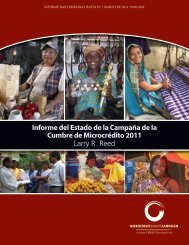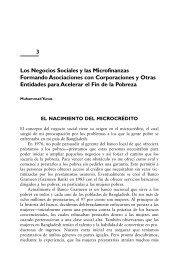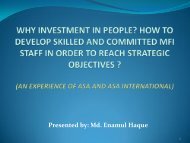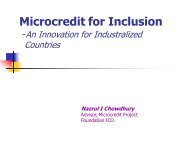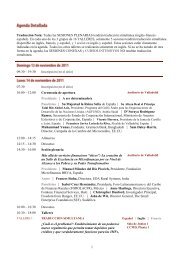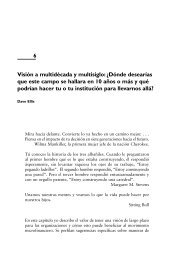Financial Literacy: A Step for Clients towards Financial Inclusion
Financial Literacy: A Step for Clients towards Financial Inclusion
Financial Literacy: A Step for Clients towards Financial Inclusion
You also want an ePaper? Increase the reach of your titles
YUMPU automatically turns print PDFs into web optimized ePapers that Google loves.
2. Analysis of migration costs and how to finance them;<br />
3. Balancing personal needs and goals with family pressure to remit income;<br />
4. Budgeting <strong>for</strong> the high costs of living in urban areas<br />
5. Managing fluctuations in income and expenses;<br />
6. Understanding financial products and how to take advantage of one’s options.<br />
7. Learning to avoid high risk methods <strong>for</strong> sending remittances (Diaz 2009).<br />
<br />
Teachable moments <strong>for</strong> youth can be found in school and out. Youth are eager to<br />
save but typically don’t believe it is possible; they don’t believe that saving small<br />
amounts will add up to anything, or that banks are interested in their small<br />
deposits ; and they don’t know how to resist the many temptations to spend.<br />
<strong>Financial</strong> education, along with the opportunity to save, can be a powerful<br />
combination in fostering confident young savers. Such opportunities can be<br />
created through after-school savings clubs, mobile banks that visit schools, special<br />
savings accounts or in<strong>for</strong>mal community-based savings groups <strong>for</strong> youth.<br />
Different approaches to help girls to save<br />
The Nike Foundation has supported a multidisciplinary approach to promoting girls’<br />
saving in the Dominican Republic, Mongolia, Burundi, Kenya and Uganda. In each<br />
country, a consortium of MFIs or banks, schools and NGOS collaborated to design and<br />
implement an integrated program combining financial education and savings<br />
opportunities. Microfinance Opportunities provided technical assistance in financial<br />
education <strong>for</strong> all teams, but in each location a slightly different approach was used.<br />
<strong>Financial</strong> education was offered to girls either in school or by NGOs outside of school,<br />
while a local bank offered a special savings account designed <strong>for</strong> them. However, in<br />
Burundi, girls got access to financial education as members of CARE sponsored savings<br />
groups which provided their vehicle <strong>for</strong> saving.<br />
Cash transfer programs offer teachable moments. They now exist in 45<br />
countries and largely target women –as heads-of-household, caregivers, and<br />
elderly pension recipients. Their core purpose is to raise the income of the poor<br />
and protect vulnerable households. Conditional cash transfers (CCTs) use<br />
incentives and program conditions to link immediate economic assistance to longterm<br />
behavior changes (Nelson and Henderson, 2010). Those <strong>for</strong> whom access to<br />
a regular cash payment is a new experience may need to learn to manage this new<br />
17




